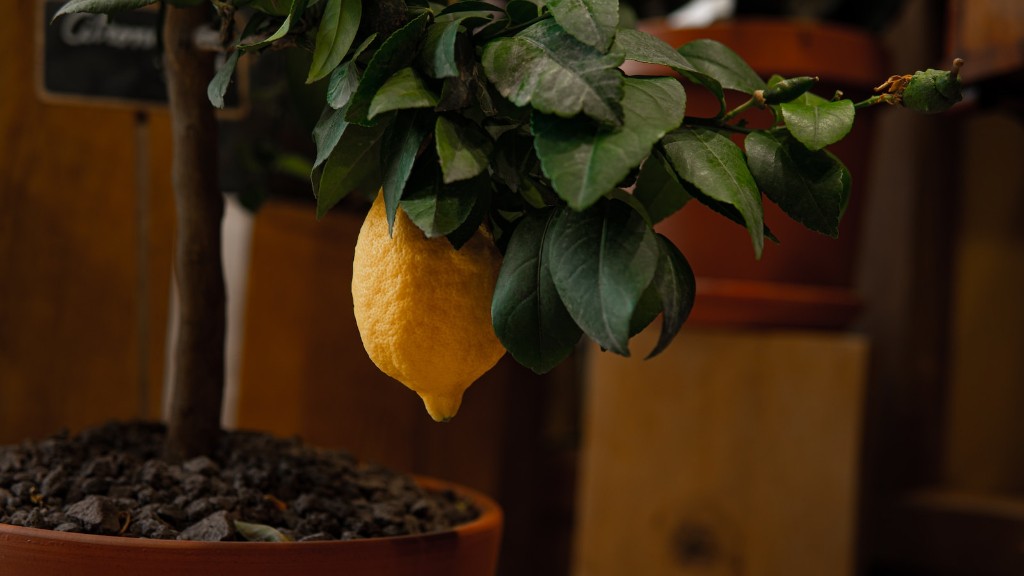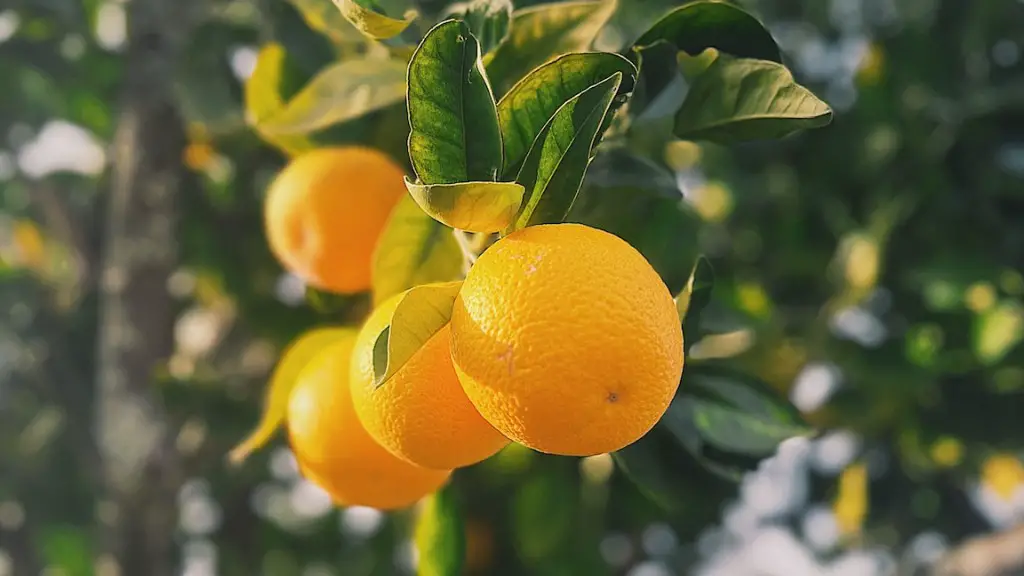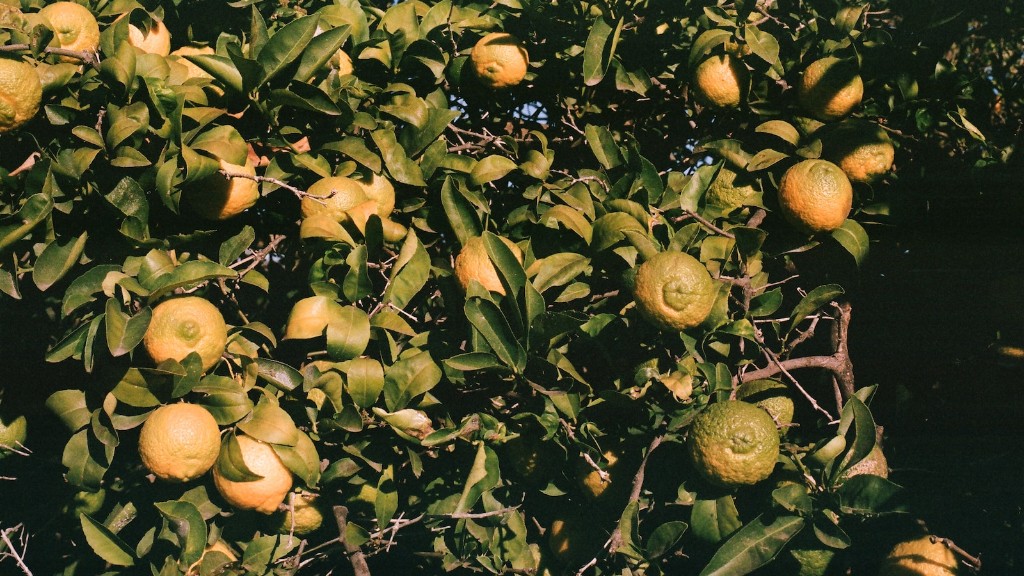If you are having a problem that your lemon tree is not flowering, you should take a closer look at a few possible causes and solutions. Firstly, your lemon tree could be deficient in essential nutrients, such as nitrogen, magnesium, zinc and boron. To replenish these minerals, fertilize your lemon tree twice a year with an all-purpose fertilizer. Secondly, if your lemon tree is not getting enough light, it may not be blossoming. Citrus trees grow best in full sun locations, so make sure yours is in a spot that gets at least 6-8 hours of direct sunlight each day. Another possible solution is to prune your lemon tree annually. This helps keep the tree healthy and promote new growth.
Additionally, it is important to check the soil pH to make sure it is in the optimal range for lemon trees. If the soil is too acid, add agricultural lime; if it is too alkaline, add sulfur. Another factor to consider is watering. Too much, or too little, water can prevent your lemon tree from flowering. Make sure the soil is kept moist, but not soggy.
Finally, lemon trees will not flower if the temperature is too cold. If you live in a cold climate, you may need to find an indoor location for your lemon tree, as temperatures must remain above 55-60℉ to maximize lemon production. If your lemon tree is getting enough light, getting nutritional balance, avoiding cold temperatures and not being over- or under-watered, then the issue likely lies in genetics. If you purchased a lemon tree that is not a true flowering lemon tree, this could explain why your lemon tree is not flowering.
Varieties of Lemon Trees
There are dozens of varieties of lemon trees available today, so understanding the different types is beneficial in helping you determine why your tree may not be flowering. The two main types of lemon trees are true lemon trees (Citrus x limon) and hybrid lemon trees (Citrus x limon hybrids). True lemon trees will flower and produce fruit if given the optimal conditions and adequate care. However, hybrid lemon trees are grown for ornamental purposes and will rarely flower or bear fruit.
When purchasing a lemon tree, ask if it is a true lemon tree or a hybrid. If it is a hybrid, it will likely not flower like a true lemon tree. If you are unsure if you bought a hybrid tree, look for green, thorny branches and bright, white flowers; these are signs of true flowering lemon trees.
If you suspect your lemon tree is a hybrid, it doesn’t mean you won’t ever get to experience the beauty of your lemon tree in bloom. Many gardeners will take cuttings from their true lemon tree and attempt to propagate lemon trees from them. This is a trial-and-error process, but can be very rewarding if successful.
Controlling Pollinators
Flowering also requires an active pollinator population, so having a few pollinator-friendly plants in your garden will attract bees, butterflies and other species that are essential for pollination. If you have any flowering plants in your garden or nearby, you will be more likely to have the necessary pollinators present to encourage your lemon tree to flower.
In addition to planting pollinator-friendly plants, you can also deploy pollinator-specific methods, such as using a hand-held electric pollinator. This is a device that vibrates and artificially infuses pollen within the blossoms of your lemon tree. It is important to note, though, that electric pollinators are not as effective as natural pollinators, so a combination of the two methods often works best.
Checking for Pollen
If you believe your lemon tree has the right conditions to produce flowers, but still it is not blooming, take a look at its pollen. Citrus flowers produce both female and male organs, and require pollen from both to bloom. Male pollen can often be seen surrounding the flowers, while female pollen requires a microscope to be visible. If there is no pollen present, it could be a sign that you are not providing the right conditions for pollinators to flourish.
Managing Pests
Pests can also be detrimental to your tree’s ability to flower. Examples of lemon tree pests include aphids, scales, mealybugs and mites. All of these pests suck away the plant’s nutrients and are often difficult to combat. The best way to get rid of them is to use insecticidal sprays or soaps. Additionally, keeping the soil moist and avoiding overfertilizing will help keep pests away.
Taking Action
In order to improve your chances of getting your lemon tree to bloom, the best solution is to take a holistic approach. This means making sure the tree is getting enough light, watering it adequately and properly fertilizing it. Additionally, you should check the soil pH, plant pollinator-friendly plants, use an electric pollinator and regularly check and treat your tree for pests.
Overseeing Your Tree
It is also important to keep an eye on your tree and know when to take action. If you notice a lack of flowers and fruit or the leaves are starting to yellow, take a closer look at your tree’s environment and nutrient levels. You can also use a zinc spray to help promote flowering when conditions are right.
Encouraging Flowers and Fruit
In conclusion, many factors contribute to a lemon tree’s failure to produce flowers and fruit. Following the steps outlined above, such as fertilizing twice a year, choosing a sunny location, pruning and monitoring pests, you should be able to get your lemon tree to flower and bear fruit.



